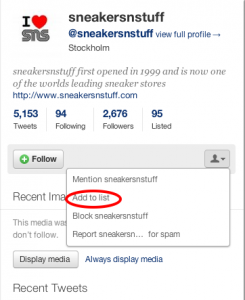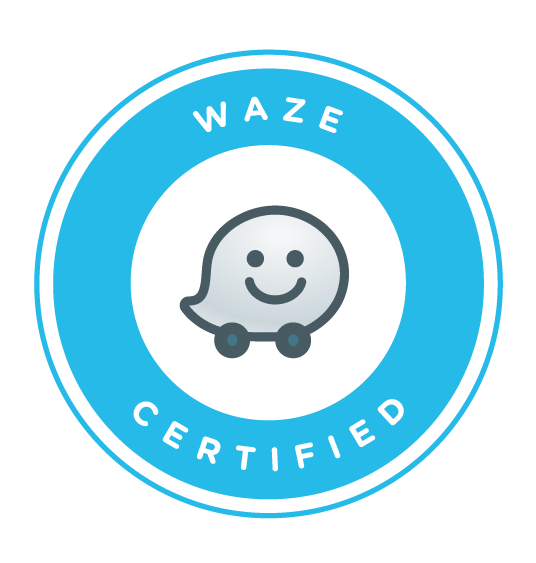This is the third in the series of “Practical Social Media”, looking in depth at how to set-up and run Social Media as part of your overall business strategy. If you have any areas you would like me to cover please let me know via the comments section below.
“Hi my name’s Chris, what do you do when you’re not hanging out with a bunch of Twitter geeks?”
And after Chris Brogan has used his favourite opening line to start a conversation at a local Social Networking meet-up he does as much as he can to keep the other guy talking so he can listen.
Two ears and one mouth, or what ever cliche you would like to use, listening is the key to getting people to trust you, like you and ultimately buy from you. Social Media is no different; before you go in shooting from the hip, peek around the saloon door first, see if you can catch the whispers in the room.
This is going to be a first real step into using Social Media as a business tool. Now it gets practical and monitor what’s going on in this space.
Have you done your homework?
In my previous post I talked about using Social Media to solve business problems; what are the ones you are trying to solve? If it is reaching a wider audience to increase sales then you want to find key influencers within your marketplace. If you are trying to establish yourself as an expert in a particular sector, to gain trust and in turn increase sales then you will be looking to help people with Social Media.
For both of these goals we use the same tools, but in slightly different ways. The first thing we try to determine is if there is an opportunity for us within Social Media for our particular business.
Let’s get set-up
We’re going to start with Twitter, not just because it’s my favourite tool, but because I think it is the easiest tool from which to see possible opportunities. It’s real-time nature means that even in the narrowest niche you are likely to see some action. There are more advanced Social Media monitoring tools which I will cover later in the series.
For the examples in this exercise I am going to be running two imaginary, but related businesses, to demonstrate how to use Twitter differently dependant on your objectives. In the first instance I am going to be a running shoe manufacturer or brand, in the second I am going to be a running shoe retailer.
We need to identify some keywords pertinent to our industry. Very much like you would when trying to optimise a web site for the search engines. In fact if you have a commercial web site you may have already done this, and can draw from that previous research. For others just select some basic words that would be used when discussing your product or service, these will help demonstrate the principles here.
For my test, example words might be: jogging, running, 10k, 5k, 5 mile, 10 mile, marathon, half-marathon, trainers, running shoes.
If you haven’t already go to Twitter.com and create yourself an account. The purpose of this account will be to listen in on conversations. We are not going to interact, therefore you don’t need to worry about user-names and profiles, feel free to make them up. You can also use an existing account if you wish, we won’t be following anyone just yet.
Finding influential people in your market
In the first trial we will be looking for influencers. The basis for this being that as a manufacturer I want to find people who may write or promote my product or brand for me.
We need to create a Twitter list to store people we may discover:
In Twitter, click on “Profile”, then “lists”, then “create a list”. Give your list a name, I will call mine “Key Influencers”, you can give it a description if you wish and make the list private if you don’t want anyone else to see it.
In the search box at the top of the page on Twitter enter your first keyword and hit return.
If you click on the screenshot below you can see the results for my search on the word “Marathon”. There are some unrelated Tweets in the results as you would expect, but amongst them are people Tweeting about Marathon running, potentially key people that may be of interest.
You can save this search by clicking the button on the top right, making it easier to return to at a later date.
For now scroll through the list of Tweets, click on the names of people of interest. In my example it would be people mentioning marathons in relation to running. A panel with their details will slide out; to the right of the green follow button is a silhouette of a head and shoulders, click on this, then click add to list and select your “Key Influencers” list, see screenshot below.
There is no need to Follow these people at this stage if you don’t want to, you’ll be able to see all of their Tweets just by viewing the “Key Influencer” list.
Perform this search with your other keywords and repeat the process for 5-10 minutes a day for the next couple of weeks. We’ll come back and analyse the results in a future post.
Can I help you sir?
In the second version of our business scenario I am a retailer. This time I am looking to see if there is enough discussion around my market sector so that I stand a chance of getting myself noticed as an expert in the marketplace. Brands or manufacturers can also use this in addition to the “Key Influencer” search.
This time create a list based on the instructions above but name it “Questions”.
Using your keywords do a search on Twitter again but append a question mark, for example “running shoes ?” – without the quotes.
Now we have a list of people asking questions about running shoes. Add these people to your list, you can follow these people later if appropriate, but make sure to save the search.
Also, keep a list of the questions being asked as they will prove valuable in the later stages of our Social Media Strategy. Repeat this process for all of your keywords and spend the next couple of weeks checking out the results on a daily basis.
There are various ways to perform this analysis, and some of this can be done using more advanced Social Media tools or third party web sites. The aim here is to get you exposed to Twitter with a specific goal in mind, and for you to experience the potentially rich information that lays not far from the surface of Social Media.
If you have any suggestions or questions please get in touch via the comments below. Otherwise see what you can unearth for your market sector and I will be back shortly with the next step in Practical Social Media.









